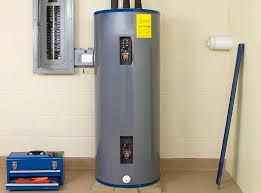Tips on How to Keep Your Home's Hot Water System in Good Condition
Tips on How to Keep Your Home's Hot Water System in Good Condition
Blog Article
The content down below involving Tips on Maintaining a Water Heater is amazingly engaging. Don't miss out on it.

Warm water is important for day-to-day comfort, whether it's for a rejuvenating shower or cleaning meals. To ensure your warm water system runs efficiently and lasts much longer, regular maintenance is vital. This short article gives functional suggestions and understandings on how to keep your home's hot water system to stay clear of interruptions and costly repairs.
Introduction
Keeping your home's hot water system might appear daunting, however with a couple of easy actions, you can guarantee it runs smoothly for many years to find. This overview covers everything from comprehending your warm water system to do it yourself maintenance suggestions and understanding when to call professional assistance.
Relevance of Keeping Your Hot Water System
Regular maintenance not only prolongs the life expectancy of your hot water system however additionally guarantees it runs efficiently. Ignoring upkeep can bring about lowered effectiveness, greater energy bills, and also premature failure of the system.
Indicators Your Hot Water System Requirements Upkeep
Understanding when your hot water system needs focus can prevent major issues. Watch out for indicators such as inconsistent water temperature level, weird sounds from the heating unit, or rusty water.
Purging the Water Heater
Purging your hot water heater eliminates debris accumulation, enhancing performance and lengthening its life.
Monitoring and Changing Anode Rods
Anode poles protect against deterioration inside the container. Evaluating and replacing them when worn is critical.
Facility Problems Needing Professional Aid
Instances include significant leakages, electrical issues, or if your water heater is consistently underperforming.
Routine Expert Maintenance Benefits
Specialist upkeep can include comprehensive inspections, tune-ups, and ensuring conformity with safety and security requirements.
Examining and Adjusting Temperature Level Settings
Adjusting the temperature level setups guarantees optimal efficiency and security.
DIY Tips for Upkeep
You can carry out several upkeep tasks yourself to maintain your hot water system in leading condition.
Looking for Leaks
Frequently inspect pipelines and connections for leakages, as these can result in water damages and higher bills.
Recognizing Your Hot Water System
Prior to diving into upkeep tasks, it's helpful to comprehend the basic parts of your hot water system. Typically, this consists of the water heater itself, pipes, anode poles, and temperature controls.
Month-to-month Maintenance Tasks
Normal month-to-month checks can help capture minor problems prior to they intensify.
Evaluating Stress Relief Valves
Checking the pressure relief valve guarantees it works appropriately and stops too much pressure build-up.
Insulating Pipes
Shielding hot water pipes reduces warm loss and can save energy.
When to Call a Professional
While do it yourself upkeep is beneficial, some problems call for professional know-how.
Conclusion
Routine upkeep of your home's warm water system is vital for performance, longevity, and cost savings. By adhering to these pointers and knowing when to seek specialist help, you can guarantee a trusted supply of hot water without unforeseen interruptions.
How to Maintain an Instant Hot Water Heater
Before tinkering with your hot water heater, make sure that it’s not powered on. You also have to turn off the main circuit breaker and shut off the main gas line to prevent accidents. Also turn off the water valves connected to your unit to prevent water from flowing into and out of the appliance. 2. When you’re done, you have to detach the purge valves’ caps. These look like the letter “T†and are situated on either side of the water valves. Doing so will release any pressure that has accumulated inside the valves while at the same time avoid hot water from shooting out and burning your skin. 3. When the purge valves’ caps are removed, you have to connect your hosing lines to the valves. Your unit should have come with three hoses but if it didn’t, you can purchase these things from any hardware or home repair shops. You can also get them from retail stores that sell water heating systems. Read the user’s manual and follow it to complete this task properly. When the hosing lines are connected, open the purge port’s valves. 4. You should never use harsh chemical cleaners or solutions when cleaning your unit. Make use of white vinegar instead. It should be undiluted and you’ll probably use about 2 gallons. 5. Now flush your water heater. This task should probably take about 40 minutes. We can’t give you specific directions for this because the procedure is carried out depending on the type, model and brand of your heater. With that being said, refer to the user’s manual. 6. When you’re done draining the unit, you have to turn off the purge port valves again. Remove the hosing lines that you earlier installed on each of the water valves. Put the valve caps (purge port) back in their respective places and be very careful so as not to damage the rubber discs that are found inside these caps. 7. Now that everything’s back in place, check your user’s manual again to find out how to reactivate your water heating system. 8. Once it is working, turn one of your hot water faucets on just to let air pass through the heater’s water supply pipes. Leave the tap on until water flows smoothly out of it. https://www.orrplumbing.com/blog/2014/september/how-to-maintain-an-instant-hot-water-heater/

Hopefully you enjoyed our part on What Kind of Maintenance Do Water Heaters Need?. Thank you so much for taking a few minutes to read through our article post. Are you aware of another individual who is serious about How to Maintain a Hot Water Heater in a Few Simple Steps? Take a moment to share it. Kudos for being here. Please come visit our website back soon.
Additional Information Report this page